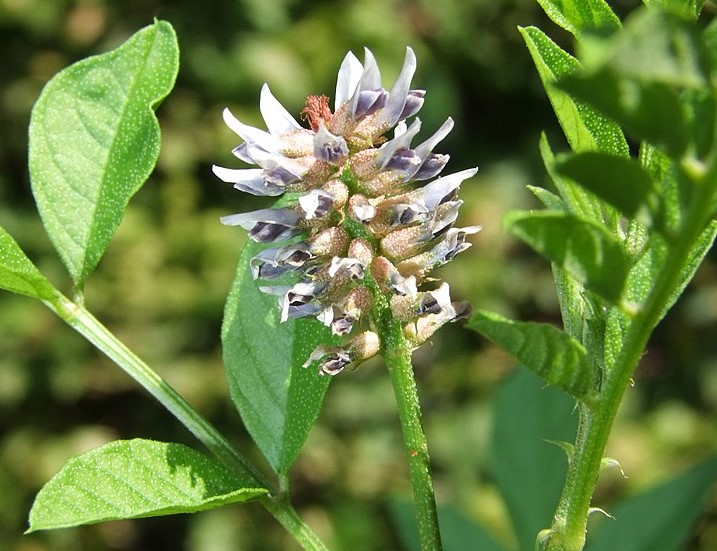Thyme (Thymum) was a symbol of life energy to the ancient Greeks, of spirit and bravery. “Tosmell of thyme” was an expression of praise, and athletes anointed their chests with thyme oils before games to promote courage. The herb’s generic name Thymus, thus, is thought by some to derive from the Greek thymos meaning courage. Others think it derives from the Greek word thymiama which refers to a substance burnt as incense, and an incense burner is called a thymiaterion.
Thyme, crushed or as incense, was used for fumigating producing fragrant smoke offerings against evil and in sacrifice to the Gods. Virgil refers to the use of thyme as a fumigant in his Georgics and Pliny informs us that burning thyme puts all venomous creatures to flight. The antiseptic properties of thyme also were fully recognized, as well as its many other medicinal values. Blossoming thyme covered the hills of Hymettos as it still does today.
Ovid’s “purple hills of flowering Hymettos” refers to the wild thyme blossoms, and the honey made in this area then, as now, was considered the best in the world. So special was the honey of Mount Hymettos to the ancients that the idea of sweetness was equated with thyme. (Mount Hymettos thyme is Thymus capitatus, an upright subshrub which is sometimes given its own genus as Coridothymus capitatus.)
Pliny remarks that Attic thyme was imported to Rome, but that it was difficult to grow in Italy partly because it required a sea breeze. All thyme, he adds, was once thought to require sea air; but there is a type that thrives now in the province of Gallia Narbonensis on stony plains.
The sweet smell of thyme also made it a popular component of the garland’s beloved to the ancients. In a fragment by the Greek dramatist Eubolus, a garland seller recommends a wreath of thyme, “for who would forbear to kiss a girl who’s wearing this?
“Dionysius of Syracuse, famous for his lavish parties, strewed his palace with wild thyme before entertaining, partly because its pungent fragrance was considered aphrodisiac. These thymes were probably Thymus vulgaris or one of several species of creeping thymes native to the Mediterranean area. About 300 B.C. Theophrastus noted that abundant thyme blossoms indicated a large harvest for the beekeeper. If rained upon, the flowers were injured or even destroyed, but they thrived on a sea breeze.
Cultivated forms of thyme are indistinguishable, he adds, ‘but the wild kind Attic thyme is said to have more than one form. Of the mountain thymes, one variety is savory and very pungent, while the other is delicate and more fragrant. In his Concerning Odors Theophrastus also mentions the use of tufted thyme flowers in perfume. Thyme appears in Hippocrates’ materia medica as a healing herb, and in Dioscorides’herbal “thymos (Thymus capitatus) is known by all.” Dioscorides recommends it for stomach complaints, asthma, worms, phlegm, and for dissolving blood clots.
He also lists another thyme called serpyllos because it creeps, saying that it is the garden kind and is used for making garlands. A related variety he describes as wild and upright, growing on rocks, sweet-smelling, sharp-tasting, and better for medicinal uses than garden thyme. Pliny too catalogs several kinds of thyme. His thymus, or garden thyme, seems to be Thymus vulgaris, although he discusses Attic thyme as well as wild creeping thyme that he calls serpyllum, used for medicines and garlands.
Pliny’s list contains twenty-eight disorders that thyme remedies, generally paralleling that of Dioscorides. Pliny adds that thyme took in vinegar and honey to cure hypochondria, mental aberrations, and melancholy. Epileptics are revived by their smell and should sleep on beds of soft thyme (probably Thymus vulgaris). Wild thyme drives snakes away.
Aristophanes praised a drink made from figs and thyme. Virgil was among those Romans who thought that thyme was an invigorating food, and we know that it was used as a salad green and to flavor cheeses. Apicius included thyme in moretum, a mixture variously described as a salad, a stew, and a cheese.
It may have been a blend of herbs used as a bouquet garni. In the Deipnosophists, Athenaeus quotes a fragment from Callimachus who wrote: “I should like to satiate myself with thyme. “Identifying the thymes of the ancient Greeks and Romans is made more difficult using the word serpyllum for creeping thymes by Varro, Pliny, Virgil, Dioscorides, and other classical writers.
The Thymus serpyllum we know today is not native to Italy but rather to northern Europe. T. serpyllum is the name given by Linnaeus in the eighteenth century to a northern species of creeping thyme of which he was aware. Classical references to serpyllum, thus, are either to Thymus vulgaris, which does layer itself as a mature plant, or to one or more of the complexes of small creeping thymes native to Italy, specifically, T. glabrescens, T. longicaulis, and T. praecox.
Thymus vulgaris is a semi-prostrate subshrub with a woody, fibrous root and numerous hard-branched stems. Small, linear, elliptical leaves are set in pairs. Thymus capitatusis a small upright shrub with vertical branches. It has narrower, linear leaves clearly arranged in two ranks that make a cross when seen from above.

Also Read: Harvesting Drying and Storage of Herbs / Spinach: How to Grow the World’s Healthiest Foods / Basil – It’s Not as Difficult as You Think
Affiliates Links:
-
How One Woman Discovered the Female Fat-Loss Code Missed by Modern Medicine And Lost 84lbs Using a Simple 2-Step Ritual That 100% Guarantees Shocking Daily Weight Loss
-
60 Seconds Habit ! That Reversed Type 2 Diabetes and Melted 56 lbs of Fat
-
Boost Your Energy, Immune System, Sexual Function, Strength & Athletic Performance
-
Diabetes Remedy # 1 Mega Offer for 2019






